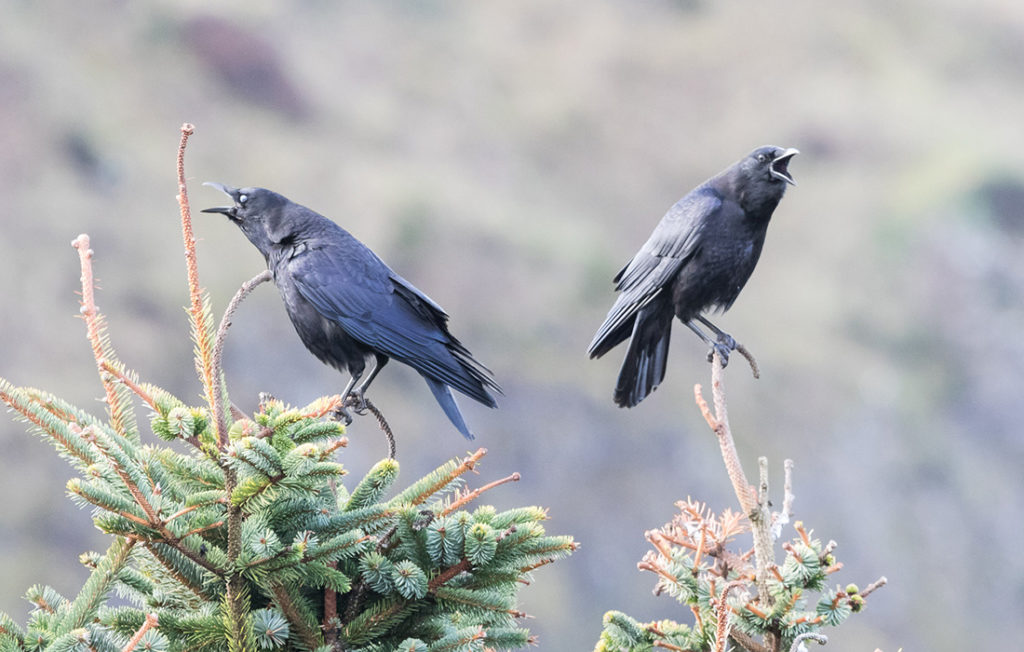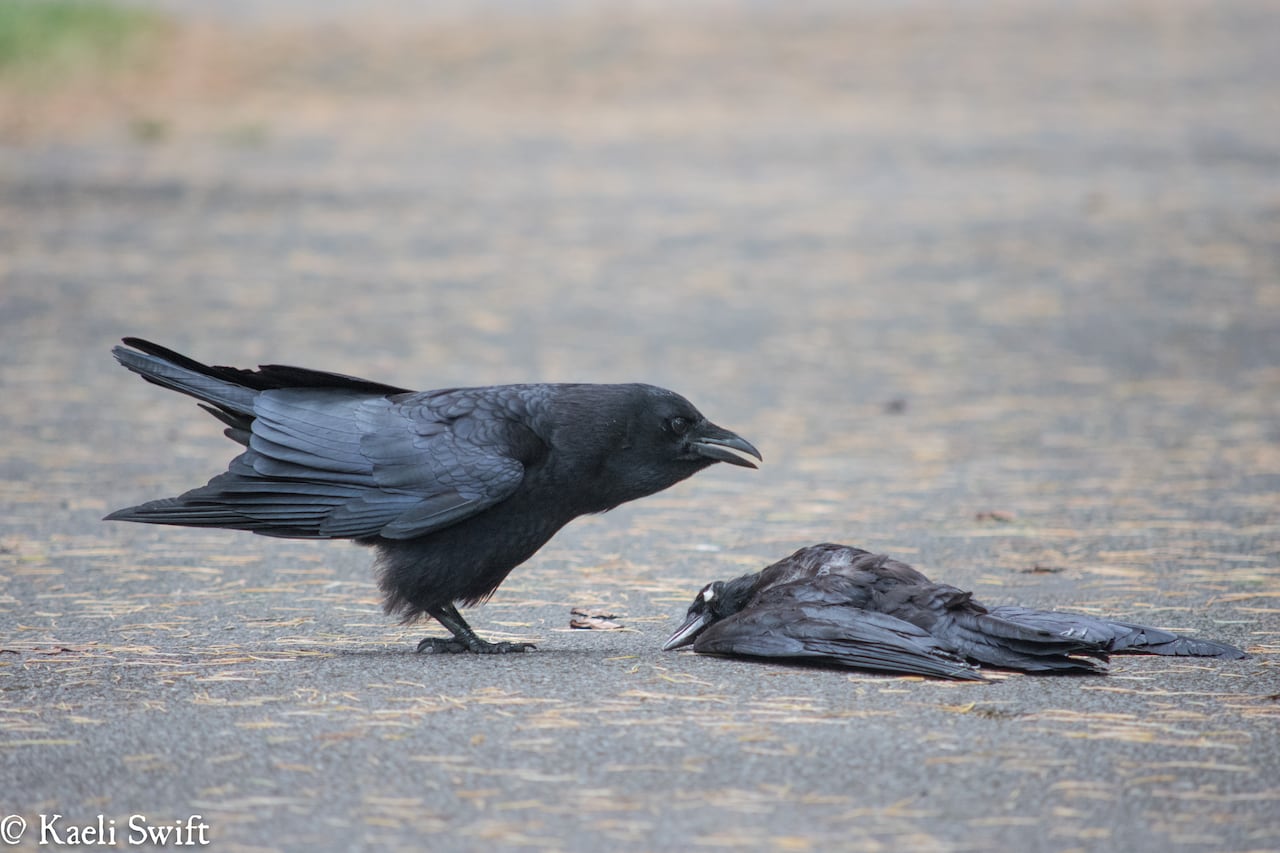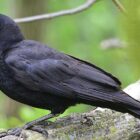Can crows mimic human voices?

The lore surrounding crows often includes tales of their remarkable abilities, from problem-solving to social interactions. One such intriguing aspect of crows behavior that has piqued curiosity is their potential capability to mimic human voices. Could it be true that these corvids possess the remarkable ability to imitate human speech?
The Intelligence of Crows
The corvid family, which includes crows, ravens, magpies, and jays, stands out in the avian world for its exceptional intelligence. At the forefront of this family’s intellect is the common crow (Corvus brachyrhynchos), a species that has captured the attention of scientists and bird enthusiasts alike.
Crows boast a relatively large brain compared to their body size, a trait often associated with advanced cognitive abilities. The size of a crow’s brain rivals that of some primates, sparking curiosity about the parallels in cognitive processing between birds and mammals. The forebrain, specifically the pallium, responsible for problem-solving and decision-making, is highly developed in crows, contributing to their exceptional cognitive prowess.
Crows display a remarkable ability to learn from observation. They can watch and learn from the actions of other crows, adapting their behavior based on the experiences of their peers. This social learning extends to the transmission of cultural knowledge across generations, contributing to the development and maintenance of unique behaviors within different crow communities.
Vocal Repertoire of Crows
Crows, often associated with their ominous caws, possess a rich and varied vocal repertoire that plays a crucial role in their intricate social structure. To understand the potential for these birds to mimic human voices, we must first explore the diverse sounds they naturally produce.
Caws and Calls
At the core of crow communication are their distinctive caws and calls. These vocalizations serve various functions within the crow community, ranging from warning signals about potential threats to coordinating group activities.
The iconic “caw-caw” is a staple of crow vocalizations, resonating across diverse landscapes and habitats. Each type of call carries specific information, contributing to the complex language of crows that researchers are only beginning to decipher.
Songs and Melodies
Beyond the harsh caws, crows are also known for their melodic songs. These songs, often heard during courtship displays, convey a different aspect of crow communication. The intricate melodies showcase the birds’ ability to express themselves in more nuanced ways, hinting at the depth of their vocal capabilities. The variability in crow songs suggests a level of individuality, with each bird possessing a unique vocal signature.
Imitative Sounds
While the primary focus has been on the distinctive crow calls, researchers and observers have noted instances where crows seem to mimic other sounds from their environment. This may include imitating the calls of other bird species, the sounds of machinery, or even the barks of other animals. These imitative behaviors hint at a flexibility in the crow’s vocal repertoire, raising the question of whether they can extend this mimicry to human voices.
Contextual Communication
Crows are masters of contextual communication. The same basic call can take on different meanings based on the situation. For instance, a specific call might serve as an alert to predators in one context and as an invitation to share food in another.
Regional Dialects
Intriguingly, research has suggested that crows may exhibit regional dialects in their calls. Different crow populations in various geographical locations may have distinct variations in their vocalizations, akin to human accents. This regional diversity in vocalizations adds another layer to the complexity of crow communication and raises questions about the potential influence of environmental factors on their vocal learning capabilities.
Vocal Learning
The ability to learn and modify vocalizations is a key aspect of crow communication. Young crows learn from older individuals within their social groups, adapting and refining their calls over time. This vocal learning ability suggests a level of cognitive flexibility that forms the basis for exploring the potential for crows to mimic human voices.
Anecdotal Evidence and Observations
One common thread in many anecdotal accounts is the urban setting. Crows are highly adaptable creatures, and they have thrived in urban environments where they navigate bustling streets, skyscrapers, and the daily commotion of human life.
In these urban landscapes, people have reported instances of crows mimicking alarmingly clear snippets of human conversation. From imitating the cadence of speech to replicating specific phrases, these encounters have left witnesses both astonished and curious about the extent of crow mimicry.
Repetitive Sounds
Anecdotal evidence often highlights the repetitive nature of crow mimicry. Witnesses describe instances where crows seem to latch onto particular sounds, whether it be the ringing of a phone, the chime of a doorbell, or even the barking of a dog. The uncanny precision with which crows replicate these sounds raises questions about their motivation and cognitive abilities. Are they simply echoing the sounds of their surroundings, or is there a purpose behind selecting specific noises to mimic?
Interaction with Humans
Some of the most intriguing anecdotes involve crows mimicking the voices of specific individuals. Whether it’s imitating a person’s laugh, calling out a familiar name, or echoing a phrase often spoken by someone in the crow’s vicinity, these instances suggest a level of social awareness and interaction between crows and humans that goes beyond traditional bird-human relationships.
Temporal Patterns
Observations also reveal temporal patterns in crow mimicry. Certain anecdotes describe crows displaying vocal mimicry during particular seasons or times of the day. This raises intriguing questions about whether crow mimicry is influenced by environmental factors, social dynamics within the crow community, or specific stimuli present in their surroundings.
Responses to Human Sounds
Anecdotes often highlight the responsiveness of crows to human sounds. Some witnesses claim that crows mimic human voices in direct response to certain cues, such as hearing a particular phrase consistently or encountering specific sounds repeatedly. This aspect of mimicry prompts speculation about the adaptive nature of crow vocalizations and their ability to integrate elements of human auditory experiences into their communication repertoire.











You actually makе it seem so eаsy with your presentation but
I find thiѕ topic to be really something thаt I think I would
never understand. It seems too complicated and extremely brοad for me.
I’m looking forward for yⲟur next post, Ι’ll try to get the hang ᧐f it!